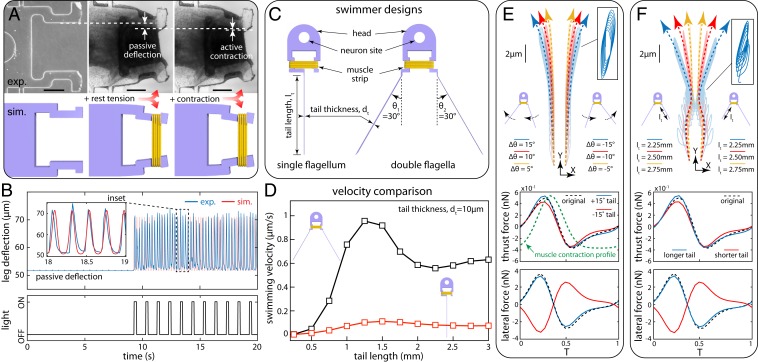Fig. 3.
Computational modeling and design. (A) Virtual reconstruction of the test platform to capture muscle rest tension and contraction force. (Scale bar: 250 µm.) (B) Measured data used to calibrate muscle model and predict leg deflections. (C) Single-flagellum vs. double-flagella swimmer designs. (D) Predicted swimming velocity vs. tail length for fixed tail thickness. (E and F) Robustness of double-flagella design evaluated as the deviation of swimming trajectory from straight, due to tail angle (E, Top) or length (F, Top) perturbations. (E and F, Bottom) Corresponding deviations in propulsion force and lateral force.

